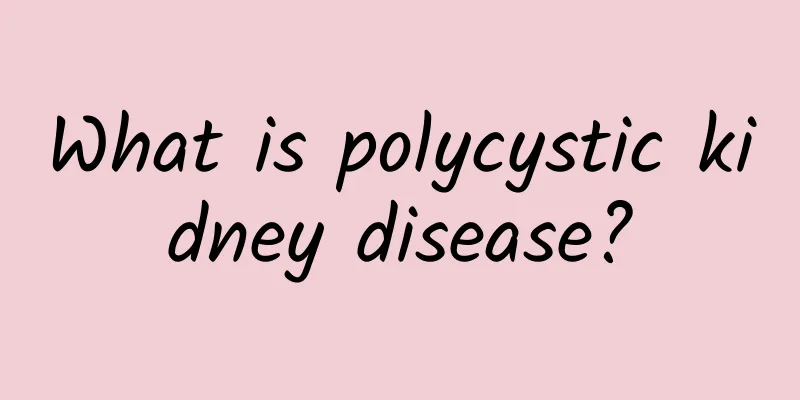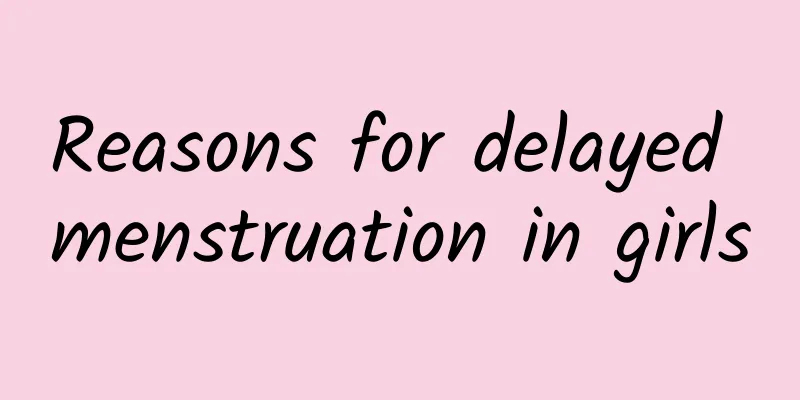What is polycystic kidney disease?

|
With the continuous advancement of modern science and technology, the level of medicine is getting higher and higher. Diseases that could not be discovered and treated before can be easily discovered and treated with modern advanced medical equipment. Polycystic kidney disease is a disease that is difficult to detect. It is possible to have congenital polycystic kidney disease, or it may be inherited. It is a disease that is difficult to detect. So what exactly is polycystic kidney disease? Let me introduce it to you below. Polycystic kidney disease is also known as Potter (Ⅰ) syndrome, Perlmann syndrome, congenital renal cystic tumor disease, cystic kidney, bilateral renal dysgenesis syndrome, benign multilocular cyst of the kidney, and polycystic disease. The disease was first reported by Zhu Xianyi in my country in 1941 and is not uncommon in clinical practice. There are two types of polycystic kidney disease: autosomal recessive (infantile) polycystic kidney disease, which occurs in infancy and is clinically rare; and autosomal dominant (adult) polycystic kidney disease, which is often discovered in young and middle-aged people but can also occur at any age. Clinical manifestations The size and shape of the kidneys of patients with this disease are normal or slightly larger when they are young. The number and size of cysts gradually increase and increase with age. In most cases, symptoms do not appear until the kidney volume has grown to a considerable extent when the patient is 40 to 50 years old. The main symptoms are bilateral kidney enlargement, renal pain, hematuria and hypertension. 1. Kidney enlargement The renal lesions on both sides progress asymmetrically and differ in size. In the late stage, the two kidneys may fill the entire abdominal cavity. There are many cysts on the surface of the kidneys, making the kidneys irregular in shape, uneven, and hard in texture. 2. Pain in the kidney area It is often a feeling of pressure or dull pain in the lower back or back, but there may also be severe pain, and sometimes abdominal pain. The pain may be aggravated by physical activity, walking for too long, sitting for a long time, etc., and may be relieved by lying in bed. Bleeding in the kidney, movement of stones, or infection can also cause sudden, severe pain. 3. Hematuria About half of the patients present with microscopic hematuria, and may have paroxysmal gross hematuria, which is caused by rupture of blood vessels in the cyst wall. When bleeding is heavy, blood clots may pass through the ureter and cause colic. Hematuria is often accompanied by leukocytosis and proteinuria. The amount of urine protein is small, generally not exceeding 1.0 g/day. In case of intrarenal infection, pyuria is obvious, hematuria worsens, and low back pain is accompanied by fever. 4. Hypertension It is a common manifestation of polycystic kidney disease. Before the serum creatinine increases, about half of the patients develop hypertension, which is related to the cyst compressing the surrounding tissues and activating the renin-angiotensin-aldosterone system. In the past 10 years, Graham PC, Torre V and Chapman AB have confirmed that the number of renin granules in normal kidney tissue, cyst-adjacent stroma and cyst epithelial cells in this disease is increased, and renin secretion is increased. These are closely related to the development of cyst growth and hypertension. In other words, cysts grow faster in people with hypertension, which can directly affect the prognosis. 5. Renal insufficiency In some cases, renal failure occurs in adolescence. Generally, renal function declines rarely occurs before the age of 40. About half of the people still maintain renal function at the age of 70. However, the process of progression to renal failure is greatly shortened in those with hypertension. Some patients can still maintain kidney function at the age of 80. 6. Polycystic liver disease About half of the polycystic kidney patients diagnosed in middle age have polycystic liver disease, and about 70% after the age of 60. It is generally believed that it develops slowly and is about 10 years later than polycystic kidney. The cyst is formed by dilation of the labyrinthine bile duct. In addition, cysts may also occur in the pancreas and ovaries, and the incidence of colon diverticula is relatively high. 7. Physical examination During physical examination, one or both kidneys may be palpable and appear nodular. There is tenderness when there is infection. 50% of patients had increased waist circumference. |
<<: Is congenital polycystic kidney disease serious?
>>: Treatment of polycystic liver and kidney disease
Recommend
Shelf life of Chinese medicine liquid
In fact, many people choose traditional Chinese m...
The efficacy of red dates and licorice soaked in water
Red dates and licorice are both foods that are be...
Why do hemorrhoids recur? You will know after reading these five points
It is true that nine out of ten people suffer fro...
A piece of the side of the tooth is missing
There are always some people who have oral proble...
How to get rid of oily hair
With the continuous improvement of modernization,...
Can black wolfberry be eaten after soaking in water?
Black wolfberry can be said to be a relatively pr...
This thing that every household has can dissolve a child's eyeball in 20 minutes
Case replay: Coco's mother's oral account...
Chinese medicine practitioners never do these ten things in their entire lives. Are you still doing them?
Xu Wenqi, a health practitioner in the Qing Dynas...
Can safflower oil be used for lumbar muscle strain?
Because of frequent labor and heavy work, some pe...
Baby's hair sweats when sleeping at night
Parents with babies at home are often particularl...
Early symptoms of small liver cancer
When it comes to a disease called small liver can...
Can hawthorn eliminate plaque in blood vessels?
Hawthorn is a fruit we often eat. Although it loo...
Pain in the middle of the chest after swallowing food
Many people have experienced chest pain in life. ...
What is the feeling of anal prolapse during ovulation?
The leucorrhea period is also the ovulation perio...
How to treat swollen lips due to allergies
Sometimes, when we find that our lips are red and...









